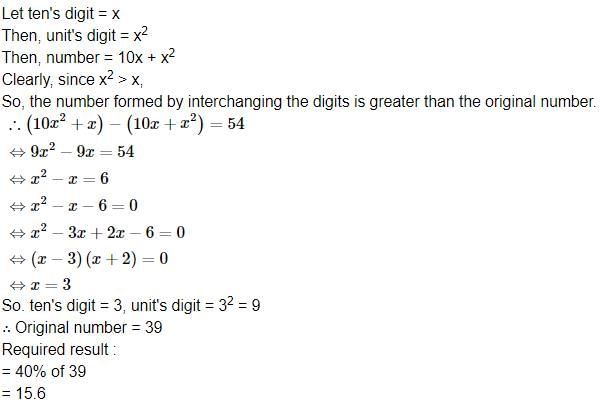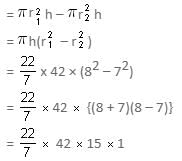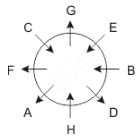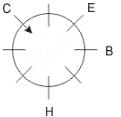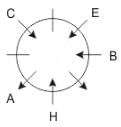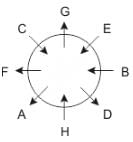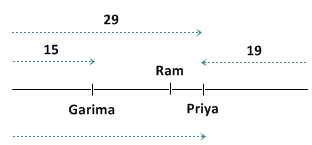Indian Army Agniveer Mock Test - 9 - CDS MCQ
30 Questions MCQ Test - Indian Army Agniveer Mock Test - 9
The average of eight numbers is 25, that of the first two is 20 and of the next three is 26. The sixth number is less than the seventh by 4, and less than the eighth by 6. The last number is
Raju is twice as good as Vijay. Together, they finish the work in 14 days. In how many days can Vijay alone do the same work?
In a two digit positive number, the digit at the units place is equal to the square of the digit in ten’s place and the difference between the number and the number obtained by interchanging the digits is 54. What is 40% of the original number?
12 percent of the voters in an election did not cast their votes. In this election there are only two candidates. The winner by obtaining 45% of the total votes and defeated his rival by 2000 votes. The total number of votes in the election
A number is first decreased by 25%. The decreased number is then increased by 20%. The resulting number is less than the original number by 40. Then the original number is –
There are six bottles of same capacity that are filled with water. The quantities of water in all the bottles are in the ratio 1 : 2 : 3 : 4 : 5 : 6. The water in each of the bottles is poured into an empty jar whose capacity is half the total capacity of the six bottles. The jar is filled up completely. How many bottles were at least 70% filled with water initially?
A dishonest milkman mixes 20 litres of water with 80 litres of milk. After selling one-fourth of this mixture, he adds water to replenish the quantity that he had sold. What is the current proportion of water to milk?
A cylindrical vessel of diameter 14 cm and height 42 cm is fixed symmetrically inside a similar vessel of diameter 16 cm and height 42 cm. If the total space between the two vessels is filled with cork dust for heat insulation purposes, then how many cubic centimetres of cork dust will be required?
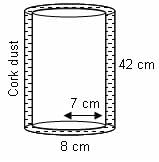
A tap drips at an average rate of 2 drops in 3 seconds. It takes 2080 drops of water to completely fill a hemispherical vessel of radius 8.3 cm. How many times can the vessel be filled in this manner in 13 hours?
The opinions and the comments about the working of the government are also expressed through media like
Consider the following statements:
- The first telegraph line in India was laid between Kolkata (formerly Calcutta) and Diamond Harbour.
- The first Export processing zone in India was set up in Kandla.
Which of the statements given above is/are correct?
During the freedom struggle, Aruna Asaf Ali was a major woman organizer of underground activity in
Which of the following states does not border on Myanmar?
Which organization received the GeM award in the "Timely Payments (CPSEs)" category?
What is the significance of the 67th TAAI Convention in the travel industry?
Tape recorder should not be kept near one of the following things –
Which physical quantity is measured in ‘siemens’?
The surface tension of water on adding detergent to it –
In a refrigerator, the cooling system should always be –
Name the tiny pores present on the surface of leaves in plants.
What is the maximum Water Vapour content in the atmosphere?
The chemicals most commonly used for cloud seeding or artificial rainmaking' is/are
_____ is the number of shells for elements of the 3rd period.
Directions: These questions are based on the following information, read the comprehension carefully to answer the given questions.
Eight people A, B, C, D, E, F, G and H are sitting around a circular table but not necessarily in the same order. Some are facing inside and some are facing outside. Not more than two people facing same direction are sitting together.
H sits third to the right of C who is not facing outside. Immediate neighbours of H are facing same directions with respect to each other but opposite direction with respect to H who is facing inside. B is the immediate neighbor of E and both are facing same direction. E sits second to the left of C who is not the immediate neighbor of B. There are equal number of persons facing inside and outside direction. B sits third to the left of A and both are facing opposite directions to each other. H sits to the immediate right of D. F sits second to the left of G.
Q. If all the persons sitting are equidistant and if H faces south direction, what direction will B be facing?
In a row where all are facing north, Priya is 15th from the left end and Garima is 19th from the right end. They interchange their positions, and Ram who sits 24th from the left end sits at the 5th place to the left of Priya's new position. How many persons were there in the row?
If GO = 32, SHE = 49, then SOME will be equal to



